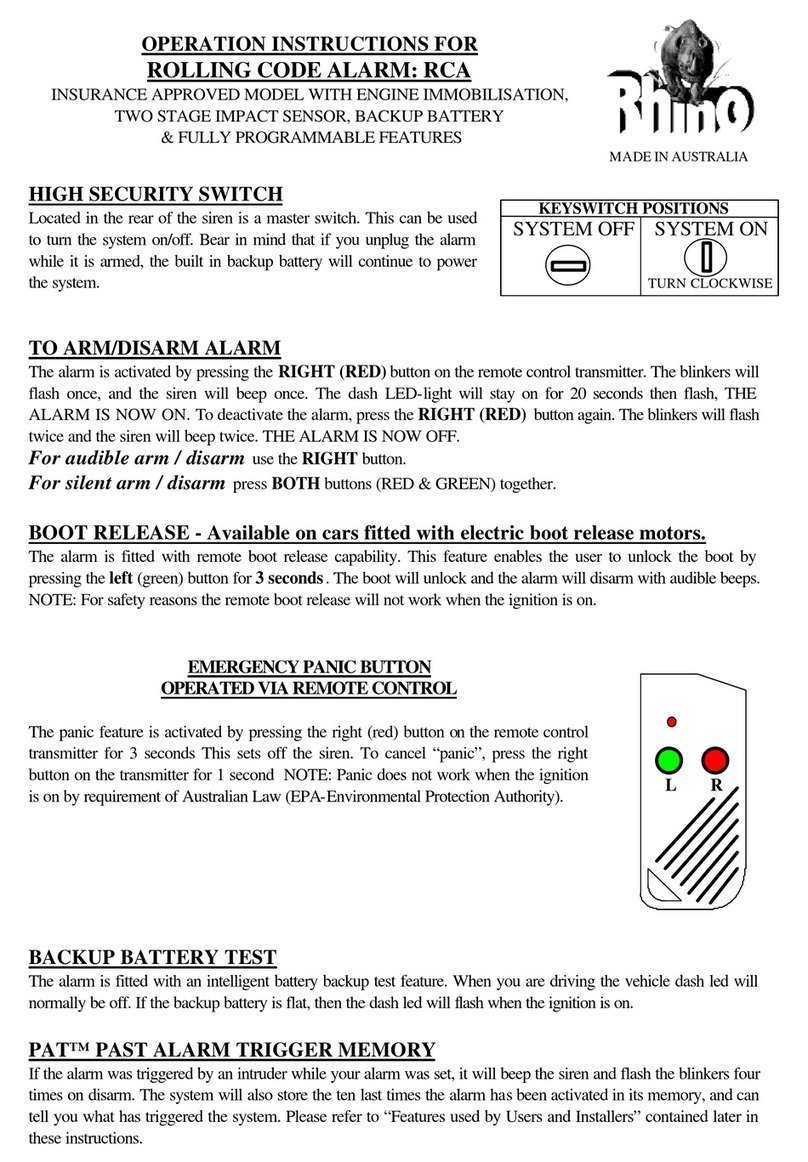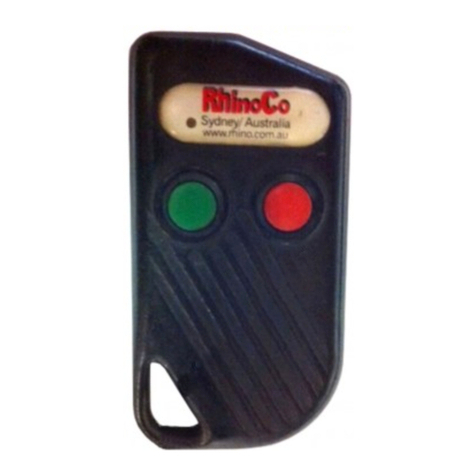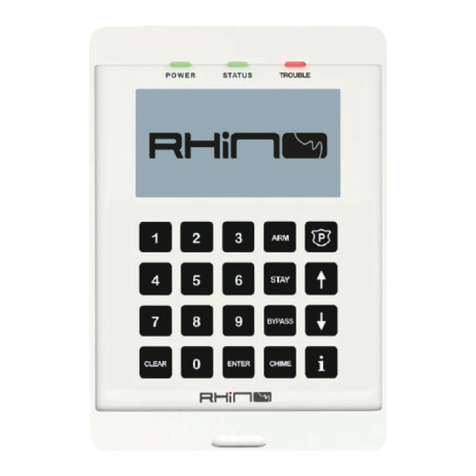
WIRING INSTRUCTIONS
RED -
CONNECT TO CONSTANT +12 VOLTS VIA THE FUSE BOX AT THE POINT WHERE
THE INTERIOR LIGHT CIRCUIT IS POWERED. CURRENT (VOLTAGE) SENSING WILL
NOT WORK IF THIS PROCEDURE IS NOT FOLLOWED.
BLACK -
CONNECT TO A SUITABLE EARTH ON THE CAR BODY
ORANGE
(x2) -
CONNECT TO THE LEFT AND RIGHT INDICATOR CIRCUITS
OF THE VEHICLE TO FLASH THE INDICATORS
YELLOW -
CONNECT TO A +12 VOLTS IGNITION SWITCHED LEAD, WHICH DOES NOT FALL
TO 0 VOLT WHEN THE ENGINE IS CRANKED
DARK BLUE -
-
CONNECT TO PIN SWITCHES FOR BONNET
CONNECT TO PIN SWITCHES FOR BOOT (PLEASE NOTE: IT IS ADVISABLE TO WIRE
THE BOOT TO THE DOOR SWITCHES: THIS WILL PROVIDE “DOOR AJAR” WARNING
ON THE BOOT, AND ALSO SIGNAL THE AUTO RE-ARM FEATURE TO CANCEL IF THE
BOOT IS OPENED BY THE OWNER ON DISARMING THE SYSTEM.)
WHITE -
CONNECT TO EXISTING DOOR SWITCHES.
(PLEASE NOTE: ONLY NEGATIVE SWITCHING DOORS, IF POSITIVE DOOR
SWITCHING -MUST USE RELAYS TO REVERSE TO NEGATIVE -SEE DIAGRAM)
GREEN (X2)
Inside black cover -
LOCATE THE POSITIVE FEED WIRE TO THE STARTER, CUT THAT WIRE AND JOIN
THE TWO GREEN WIRES TO EITHER END OF THE STARTER FEED WIRE WHICH YOU
HAVE JUST CUT
GREEN (X2)
Outside black cover -
LOCATE THE POSITIVE FEED WIRE TO THE FUEL PUMP, CUT THAT WIRE AND JOIN
THE TWO GREEN WIRES TO EITHER END OF THE FUEL PUMP FEED WIRE WHICH
YOU HAVE JUST CUT
YELLOW/ BLACK -
THIS IS A SWITCHED NEGATIVE OUTPUT (-VE 150mA). CONNECT TO THE
NEGATIVE WIRE (USUALLY BLACK) ON ANY ACCESSORY USED i.e. ULTRASONIC /
GLASS BREAKAGE / MICROWAVE DETECTORS OR ETC
LIGHT BLUE -
THIS IS A NEGATIVE TRIGGER, AND SHOULD BE CONNECTED TO THE OUTPUT
CIRCUIT WIRE ON ANY ACCESSORY TO BE USED. (ie ULTRASONIC, MICROWAVE,
OR GLASS BREAK DETECTORS, ETC.)
BROWN
-
THIS IS THE NEGATIVE OUTPUT (150mA MAXIMUM) FOR THE BOOT RELEASE.
(Optional for use where electric boot release is to be connected)
VIOLET/BLACK -
NEGATIVE TRIGGER ON ALARM TO BE USED TO INTERFACE TO PAGER OR
OPTIONAL SIREN (100mA MAXIMUM)
ORANGE/BLACK -
NEGATIVE PULSE LOCK SIGNAL
PINK/YELLOW -
NEGATIVE PULSE UNLOCK SIGNAL
PINK -
CURRENT SENSING OVERRIDE. CONNECT TO POSITIVE POWER TO DISABLE
CURRENT SENSING
RED/WHITE -
NEGATIVE TRIGGER TO SIREN. CONNECT TO THE BROWN WIRE OF AN SB41.
VIOLET/YELLOW -
ALARM OVER RIDE. CONNECT TO THE WHITE WIRE ON AN SB41.
CURRENT SENSING
The alarm is fitted standard with current sensing. This feature incorporated in Rhino systems
has been proven to be very reliable. The alarm will detect any sudden drop in voltage in the
vehicle’s electrical system, for example if the interior light comes on, or if the electrical system
shows a voltage drop through tampering.
If removal of this feature is necessary, this can be achieved by connecting the pink wire coming
out from the loom tubing to the red power wire + 12V.



































